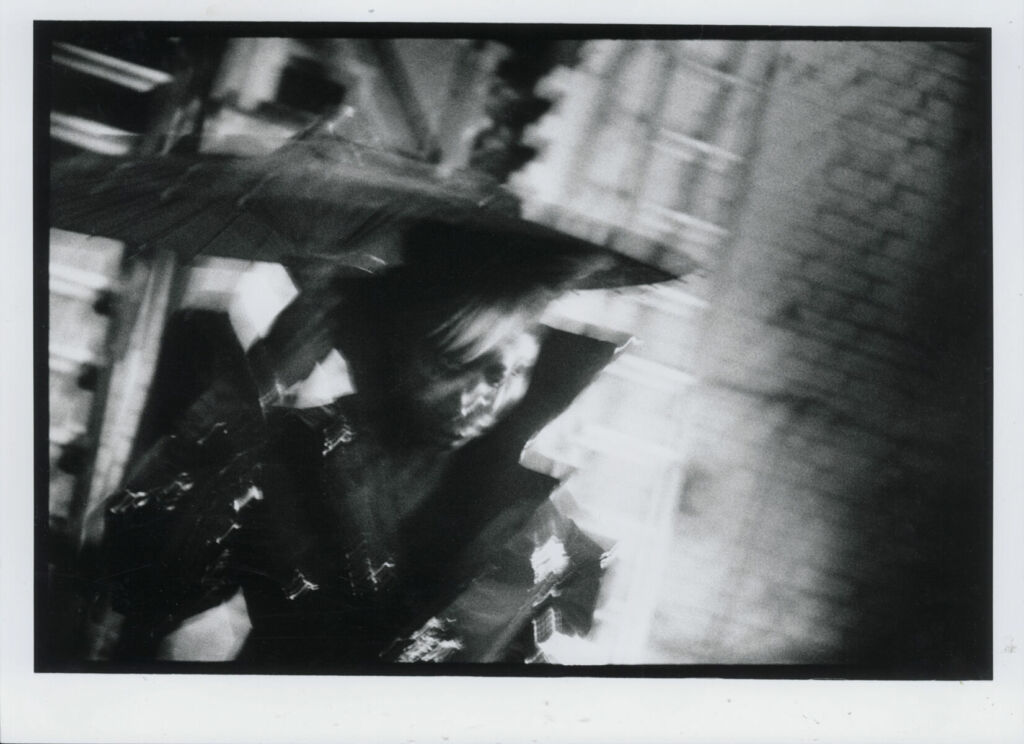Text by Piotr Bockowski

An array of manhandled, young females and femme boys is being presented inside a rough, concrete basement to a posey audience aligned by a wall. The jaded crowd witnesses a seemingly disengaged group of about dozen submissive living mannequins moved around by oppressive limbs; as they descend into the space down a metal staircase, they are pushed and pulled along forcefully by a couple of watchmen, who distribute the bodies in few rows but apart from each other, as to impair human contact. The watchmen blind them and gag their mouths with white ropes, stretching expressionless pretty faces into grotesque grins.
The scene is intensely reminiscent of ‘teenage meat markets’, where human traffickers sell impoverished kidnapped girls to prostitution rings, usually in a recent post-war context, such as the infamous Balkan cross-road of highways in Bosnian Tulza by Republika Srpska and Croat-Serbian border or other locations in considerably less fortunate areas of Eastern Europe. It could also be a theatrical interpretation of Sade’s “Salo”, visually inspired by Pasolini’s cinematic sequences in which deprived aristocrats choose their victims from amongst village youth that would be violently recruited against their will in order to present juvenile body parts for calculated examination of societal figureheads.
Undertones of cold cruelty taint this theatre of oppression, elegantly arranging it in the costume of avant-garde outfits and nervous silhouettes. What otherwise could be easily mistaken for an organised crime scene or a ceremonial repressive procedure pertaining to some obscure regime here becomes a possibility of acute political critique, smuggled through the glam-frenzied presentation of underground designer Ingrid Kratchenko at London Fashion Week 2022.
Edited into Jubilee‘s filmic impression, which premiers today at CLOT Magazine, Kraftchenko’s last year show borrowed its title from the iconic second feature film of Derek Jarman. The film portrays a gang of outrageously looking guerrilla girls, who live in abandoned buildings of London East End, where they indulge in ecstatic-nihilist outbursts of aggression, planning their assault on the corrupted civilization of the British Empire and its historical authorities meanwhile being self-entertained by spontaneous terrorist attacks that involve torturing TV starlets. Originating from Kent coast, nearby Dungeness, Kraftchenko was born when Jarman was dying of AIDS there. In her fashion design, she conveys Jarman’s dreamy yet disruptive punk poetics, framing it into abstract dimensions of contemporary architecture, which she studied prior to fashion.
Kraftcheko’s wearable designs fuse elements of industrial outfits for crisis environments, including parachute gear or radiation protection uniforms, military boots, sci-fi looking shields layered with neo-barbaric violence and savage ornaments of UK post-industrial subcultures, often elevated to high-brow deconstruction strategy in fashion inspired by Margiela, who himself was inspired by homeless people on the streets of 90s Paris.
Emerging from the experience of social exclusion, the risky collision of figures, shapes and surfaces in Kraftchenko’s fashion is importantly informed by concepts of ‘wearable architecture’ or DIY portable housing solutions for nomadic living. This becomes not the only sophisticated way of Kraftchenko’s referencing urban squatting, pictured in Jarman’s cult movie. Furthermore, the choice of a stripped-down Hoxton concrete basement for the Jubilee show, broken by monumental rhythms of heavy columns, is clearly an integral part of intended by Kraftchenko’s ‘look’, as she remains notorious for finding and accessing outlandish industrial spaces across and beyond East End London and transforming them into her temporary film studios.
In its performative narrative, Kratchenko’s Jubilee ‘shanghais’ the audience onto transcontinental shipping to one of the global colonies (exemplified by models of various ethnical features, transported from other continents by international agencies to London, especially for Fashion Week) of still collapsing British Empire. In the company of jetlagged bodies from Singapore or Africa, Far East Asian-looking model Mimi Dey, ‘geisha-ed up’ as a chinoiserie doll, presents to the audience a British flag only to burn it, what makes up the central gesture of the show.
One of the watchmen collects ashes of the British flag from the floor and force-feeds it to a Black Caribbean model, which evokes a haunting phantom of the African slave trade to the Americas. Eventually, all the models allow being dragged back up the staircase, abandoning their agency to the watchman and submitting to servitude fate of exotic showroom dummies.






